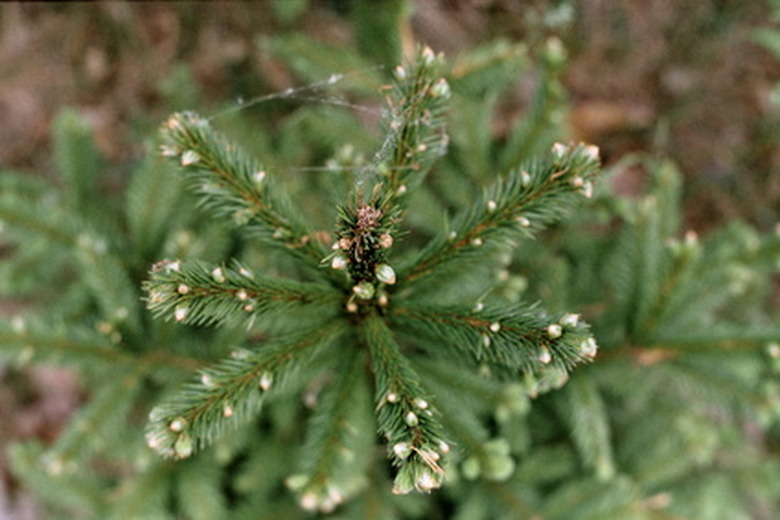How To Care For A Norway Spruce
Norway spruce (Picea abies) is a coniferous tree that will grow to 80 feet in height with a 40-foot spread. Although it is frequently used as a windbreak, its size makes it useful as an ornamental only on larger residential lots. Hardy in USDA zones 3 through 7, the Norway spruce's ideal growing conditions include full sun and acidic, moist soil. It does, however, thrive in a wide variety of conditions, is drought-tolerant in maturity and will grow in alkaline and clay soil, as long as the roots aren't continuously moist.
Step 1
Apply a fresh, 4-inch layer of mulch around the Norway spruce each spring. Keep the mulch 2 inches from the base of the tree and spread it in a 4-foot radius around it.
Step 2
Water your Norway spruce once a week during the summer, until mid-August. Place a soaker hose at the drip line, completely surrounding the tree, and let it run for at least one hour.
- Norway spruce (Picea abies) is a coniferous tree that will grow to 80 feet in height with a 40-foot spread.
- Place a soaker hose at the drip line, completely surrounding the tree, and let it run for at least one hour.
Step 3
Fertilize the Norway spruce tree once a month, beginning when you see new growth in the spring. Use a 20-20-20 fertilizer at the rate suggested on the package. Discontinue fertilizing in August.
Step 4
Inspect the Norway spruce for mite infestations. These insects are difficult to see but if the tree is experiencing yellowing, at the base of the oldest needles, suspect a mite infestation. For heavy infestations use insecticidal soap or a commercial miticide, according to label directions.
Characteristics Of A Norway Spruce Evergreen Tree
Norway spruce grow to an average height of 100 to 200 feet with a spread of roughly 40 feet, though taller specimens have been found in Europe. Cones are brown and narrow and measure from 4 to 6 inches. Norway spruce is hardy in U.S. Department of Agriculture plant hardiness zones 3 to 7 where it prefers a cool environment, full sun and thrives in almost any type of soil that drains well and is not consistently saturated. The lower branches fall off as it grows, and its canopy, or top, also thins out and narrows into a less conical shape. While trees in their native range of Europe and Asia often live upwards of 300 years, deterioration of trees in North America and Great Britain begins when they are about 200 years old. New sprouts never emerge from the stumps or roots.
- Fertilize the Norway spruce tree once a month, beginning when you see new growth in the spring.
- For heavy infestations use insecticidal soap or a commercial miticide, according to label directions.
Things Needed
- Mulch
- Soaker hose
- Fertilizer
- Insecticidal soap
- Miticide
References
- Ohio State University: Norway Spruce
- University of Minnesota: Spruce Spider Mite
- Arbor Day Foundation: Norway Spruce
- U.S. Forest Service: Picea Abies
- Ohio Department of Natural Resources: Norway Spruce
- USDA Natural Resources Conservation Service: Picea Abies
- Plant Finder by Sunset: Picea Abies
- Gardenality: USDA/Sunset Zones Climate Conversion Chart
